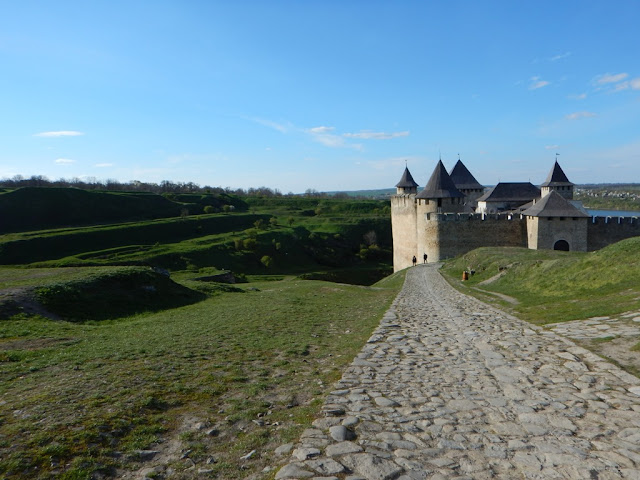The Khotyn Fortress's foundations go back to the 10th century, when Prince Vladimir The Great built it as one of the border fortifications of southwestern Kievan Rus', after he has added the land of present-day Bukovina into his control. The fort, which eventually was rebuilt into a fortress, was located on important transportation routes, which connected Scandinavia and Kiev with the Ponyzia (lowlands), Podillia, Genoese and Greek colonies on the Black Sea on the famous "trade route from the Varangians (Vikings) to the Greeks".
During the 1340s the Fortress was taken by Moldavian prince Dragos, a vassal of the Kingdom of Hungary. After 1375 it was a part of the Principality of Moldavia. Under the rule of Stephen the Great of Moldavia the fortress was greatly expanded, new 5–6-meter (16–20 ft) wide and 40 meters (130 ft) high walls were built. He also added three towers and raised the courtyard by 10 meters (33 ft). This reconstruction brought the fortress to the structure it has today. During 14th-16th centuries the Fortress served as a residence to Moldavian Princes.
In September–October 1621, the Polish-Lithuanian Commonwealth army under command of hetman Jan Karol Chodkiewicz, Petro Sahaidachny and Yatsko Borodavka (about 50,000 troops) successfully held off the army of Turkish sultan, Osman II (estimated at 100,000), in the Battle of Khotyn. On October 8, 1621 the Khotyn Peace Treaty was signed, stopping the Ottoman advance into the Commonwealth and confirming the Commonwealth-Ottoman border on the Dniester river
In November 1673, the Khotyn Fortress was lost by the Turks and Jan Sobieski started to occupy Khotyn with a Polish-Cossack army. With the 1699 Karlowitz Peace Treaty, the fortress was transferred from the Polish-Lithuanian Commonwealth to Moldavia. In 1711, Khotyn was again taken over by the Turks. The Turks then fortified Khotyn following a six-year (1712–18) reconstruction and it became the foremost stronghold of the Ottoman defense in Eastern Europe. The Medieval Fortress has been surrounded by earth ramparts and outer wall.
Here you can see the outer wall and complicated ramparts seen from the medieval castle.
Here you can admire the outer 18th century wall and ...
... its only gate.
Fortunately today the fortress is used more as a tourist attraction than a place of war.
Inside the outer walls a modern tserkva was built.
Let's go now deeper into Bukovina and visit its most precious heritage.




















































